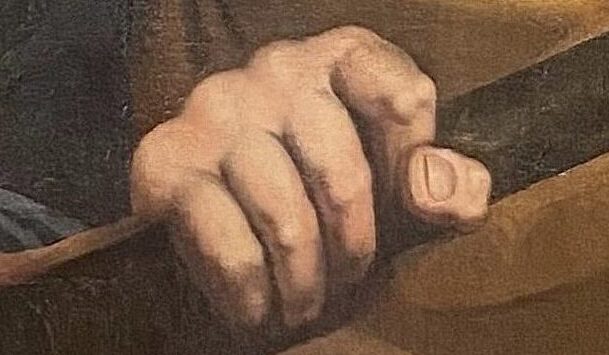Surface restoration
Surface restoration is underway and will be completed in November, 2024
Before the surface restoration, the paintings conservators stated: ”The painting is covered by a very thick darkened and oxidized dammar varnish which is partially blanched and obscures the overall look of the painting. It has been partially overpainted and has many darkened and discolored retouches. The varnish and the retouches result in a difficulty to fully see the painting.”
Meeting with the paintings conservator
We have visited the paintings conservator to begin the journey of the surface restoration. To get an idea of the size and complexity of the project the conservator needed to test clean the surface on a few places. The result was exciting, for example, one can now see an original leaf in the laurel wreath and also individual strands of hair in the eyebrow, but the most important revelation was the artistic quality evident in Domitian’s face: the skin’s smooth transition from light to shadow.




